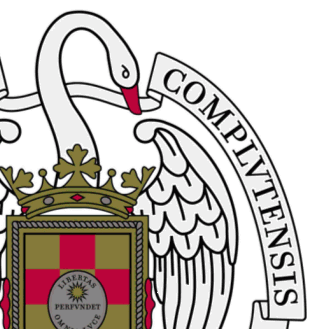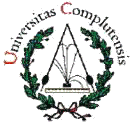
Universidad
Complutense
Madrid
GEOPHYSICS AND METEOROLOGY



Universidad Complutense Madrid |
DEPARTMENT
OF
PHYSICS OF THE EARTH, ASTRONOMY AND ASTROPHYSICS: GEOPHYSICS AND METEOROLOGY  |
 |
|
group of
PALAEOMAGNETISM |
SCHA.DI.00 model Regional Archaeomagnetic Model for Europe for the last 2000 years. Authors: Pavón-Carrasco, Fco. Javier (fjpavon@fis.ucm.es) Dpto.
Física de la Tierra:
Geofísica y Meteorlogía.
Osete, Maria
LuisaUniversidad Complutense de Madrid. 28040. Madrid. Spain. Universidad Complutense de
Madrid.
28040. Madrid. Spain.
Torta, J.
MiquelGaya-Piqué, Luis R. Equipe de
Géomagnétisme,
Institut de Physique du Globe de
Paris, CNRS;
Lanos, PhilippeTour 14, 2 place Jussieu, 75005 Paris, France. Centre de Recherche en
Physique
Appliquée à l'Archéologie,
CNRS, UMR5060 IRAMAT Université de Rennes 1, Géosciences-Rennes, Campus de Beaulieu, 35042, Rennes Cedex, France. Physics and Chemistry of the Earth - 2008
Vol. 33, p. 596 - 608 Abstract: The available Bayesian European Palaeosecular Variation Curves (PSVC) based on archaeomagnetic data have been used to derive an initial regional model for the geomagnetic field in Europe for the last 2000 years by using the Spherical Cap Harmonic Analysis (SCHA) technique. The resulting SCHA.DI.00 model provides the directional behaviour of the Earth’s magnetic field, but no information about intensity is supplied because input data are only directional. The first spherical cap harmonic coefficient, g00, has been used to normalise the rest of the coefficients. The spherical expansion extends up to Kint = 2 which, given the size of the spherical cap used and the maximum data resolution, is equivalent, in terms of spatial wavelength, to a maximum degree of approximately 5 in the ordinary Spherical Harmonic Analysis (SHA). The SCHA.DI.00 model fits the present archaeomagnetic database for Europe more accurately than global models, although it is necessary to consider that regional SCHA model and global models did not use the same database. Palaeosecular variation curves given by SCHA.DI.00 are compared with available archaeomagnetic data from Bulgaria (Sofia), Italy (Etna) and Austria (Radstadt), not used in the development of the model. The SCHA.DI.00 model improves the fit to these palaeomagnetic data with respect to the CALS7K.2 [Korte, M., Constable, C.G., 2005. Continuous geomagnetic field models for the past 7 millennia: 2. CALS7K. Geochem. Geophys. Geosyst. 6, Q02H16. doi:10.1029/2004GC000801] global model, especially for Italy. |